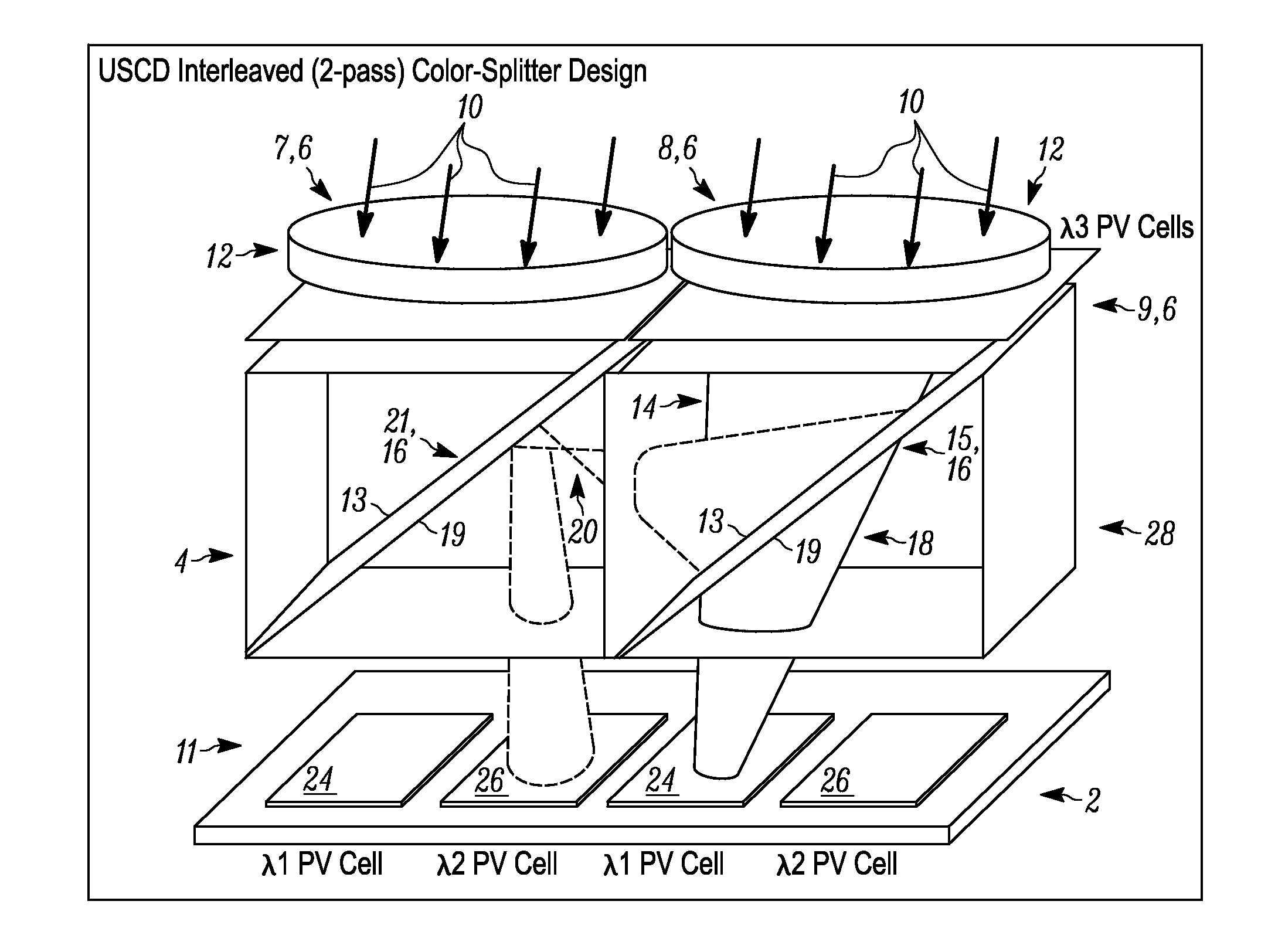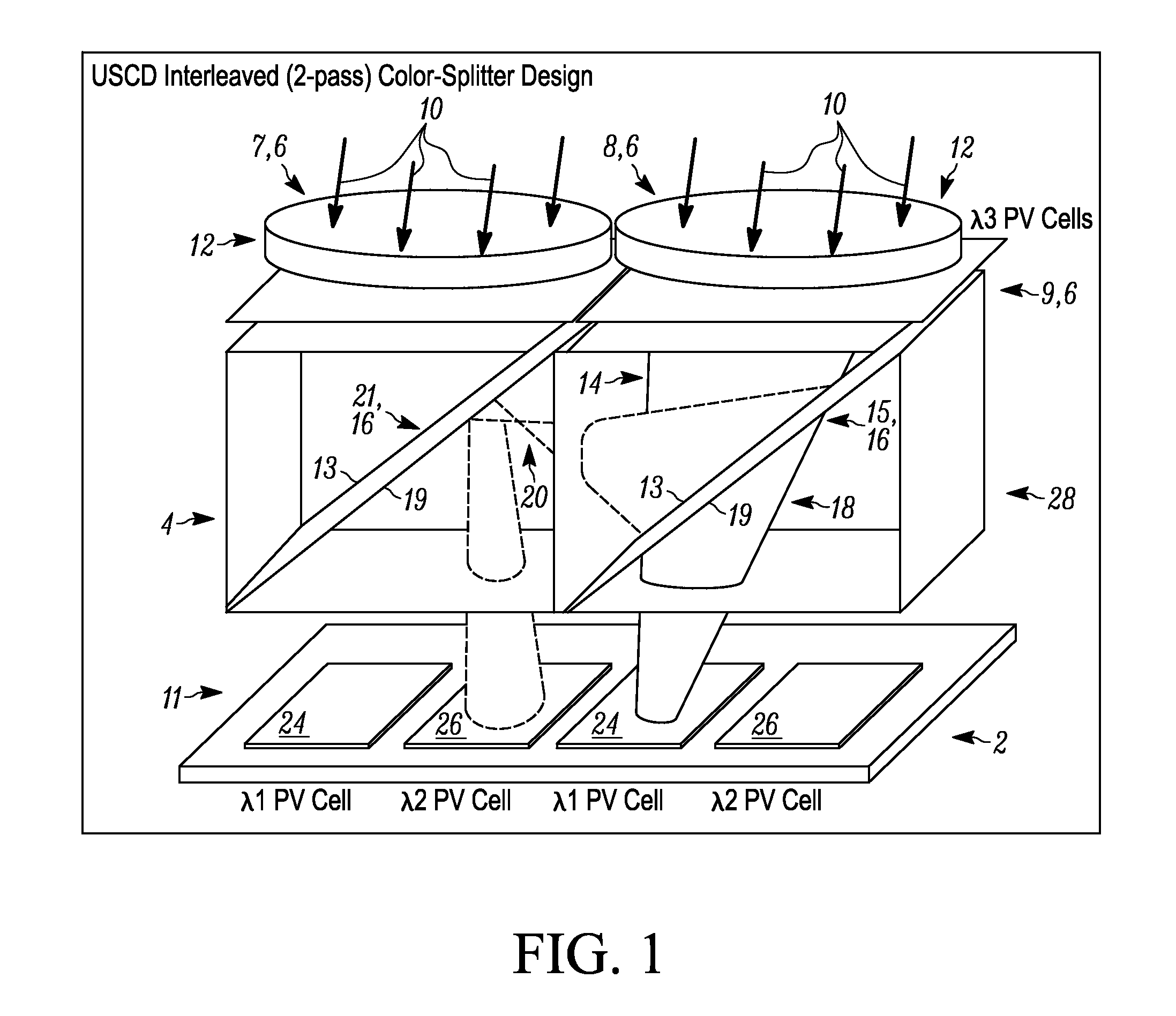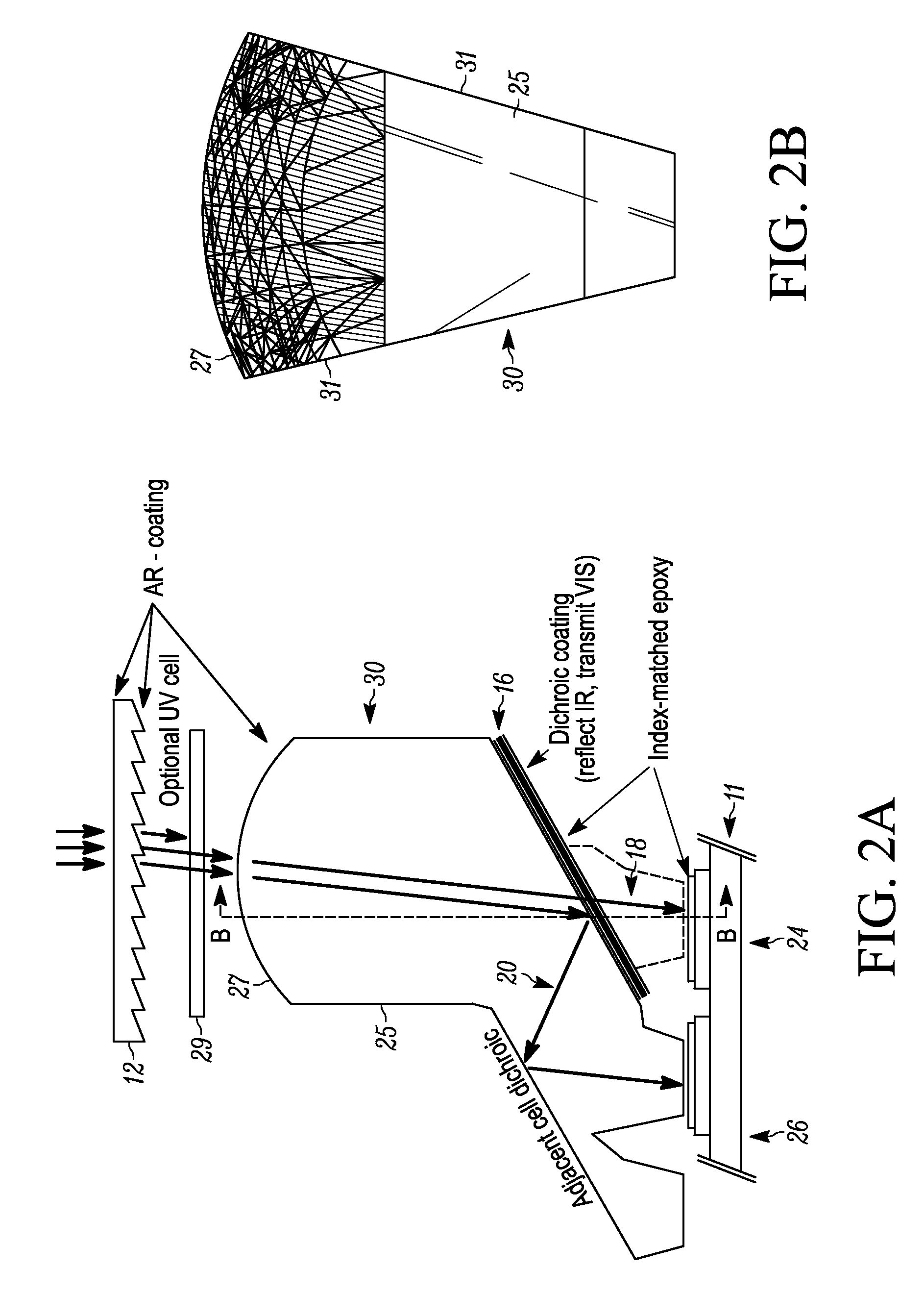System and method for solar energy capture
a solar energy and energy system technology, applied in the field of solar energy systems and methods, can solve the problems of thermal management difficult, high-efficiency pv cells remain expensive, and energy systems employing both pv cell(s) and solar concentration devices
- Summary
- Abstract
- Description
- Claims
- Application Information
AI Technical Summary
Benefits of technology
Problems solved by technology
Method used
Image
Examples
Embodiment Construction
[0018]Referring to FIG. 1, a schematic, perspective view is provided showing components of an exemplary solar energy device 2 allowing for both concentration of incoming light as well as separation of such light into light portions within different wavelength ranges that are in turn directed to different types of PV cells, respectively, in accordance with at least one embodiment of the present invention. As shown, the solar energy device 2 includes a solar concentration section 4 that includes multiple solar concentrators 6, a first 8 of which is shown completely, and second 7 and third 9 of which are shown only partly. Additionally, the solar energy device 2 also includes a photovoltaic (PV) cell section 11 that includes multiple PV cells arranged in a coplanar manner, along a side of the solar concentration section 4 that is generally opposite to a side at which incoming light is incident upon that section and upon the overall solar energy device 2.
[0019]As illustrated schematical...
PUM
 Login to View More
Login to View More Abstract
Description
Claims
Application Information
 Login to View More
Login to View More - R&D
- Intellectual Property
- Life Sciences
- Materials
- Tech Scout
- Unparalleled Data Quality
- Higher Quality Content
- 60% Fewer Hallucinations
Browse by: Latest US Patents, China's latest patents, Technical Efficacy Thesaurus, Application Domain, Technology Topic, Popular Technical Reports.
© 2025 PatSnap. All rights reserved.Legal|Privacy policy|Modern Slavery Act Transparency Statement|Sitemap|About US| Contact US: help@patsnap.com



